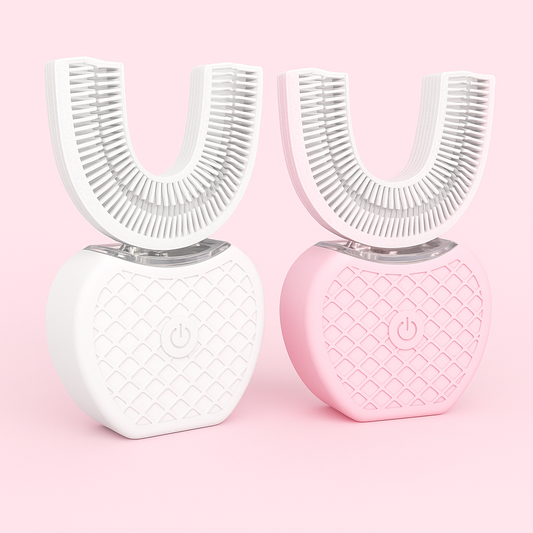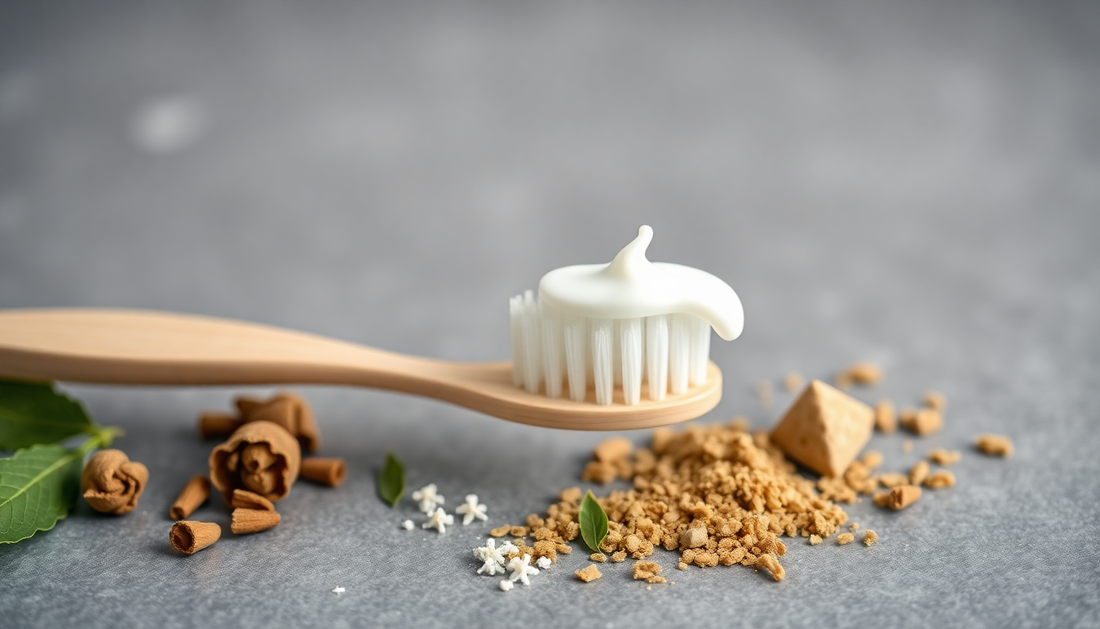Introduction: A modern approach to sensitivity and whitening
Are you tired of tooth sensitivity undermining your morning coffee and frustrated that whitening kits leave your teeth raw? Youre not alone. In 2025, many patients are seeking fluoride-free alternatives for personal, medical, or preference reasons while still wanting a brighter, healthier smile. A thoughtfully formulated niacinamide + xylitol toothpaste can be a cornerstone of a fluoride-free plan that reduces sensitivity, supports oral ecology, and helps lift surface stains.
Why consider a fluoride-free route?
- Personal or health reasons: Parents of young children, people with fluoride sensitivity, or those preferring reduced exposure may choose fluoride-free options.
- Desire for gentler care: Many fluoride-free pastes emphasize soothing ingredients, lower abrasivity, and fewer irritants, which can benefit sensitive mouths.
- Complementary alternatives exist: Ingredients like xylitol, niacinamide, hydroxyapatite, and gentle polishing agents can support enamel health and whitening without fluoride.
The science behind the stars: Niacinamide and Xylitol
Understanding how these actives work helps you select effective products and set realistic expectations.
Niacinamide (vitamin B3) — anti-inflammatory and tissue support
- Niacinamide is known for anti-inflammatory and barrier-supporting effects in dermatology; in oral care, it can soothe mucosal tissues and reduce inflammatory response in gingiva, which often contributes to sensitivity.
- It supports cellular function in soft tissues, promoting healthier gums and less reactive nerve endings near exposed dentin.
- Typical oral care concentrations are formulated to be safe and well tolerated; always follow product guidance and stop use if you experience irritation.
Xylitol — star sugar substitute that fights decay and supports neutrality
- Xylitol is a five-carbon sugar alcohol that bacteria like Streptococcus mutans cannot ferment; this lowers acid production and reduces plaque acidity after eating.
- Repeated xylitol exposure reduces bacterial adhesion and can shift the oral microbiome toward a healthier balance, lowering cariogenic potential.
- It stimulates saliva flow when used in gum or toothpaste format, which supports natural remineralization and helps clear staining particles.
Why they work well together
Niacinamide addresses soft tissue inflammation and nerve reactivity; xylitol targets the microbial and pH environment that contributes to decay and demineralization. Combined in a low-abrasion, fluoride-free paste, they provide a multi-pronged strategy: soothe, rebalance, and gently remove surface stain.
Other supportive ingredients to look for
- Hydrated silica (low RDA): A gentle polishing agent that lifts surface stains without high abrasion.
- Enzymatic stain-lifters: Proteolytic enzymes or peroxidase systems can help break down pellicle proteins that bind stains.
- Hydroxyapatite: A fluoride alternative that can aid in enamel repair and reduce sensitivity by occluding dentinal tubules.
- Potassium nitrate or arginine: Common desensitizing agents; these may be included in some products or recommended by dentists when sensitivity is severe.
- Avoid high levels of detergents and alcohol: SLS and strong alcohols can irritate tissues and increase sensitivity for some people.
Extrinsic vs intrinsic staining — what whitening can and cant do
- Extrinsic stains are on the surface (from coffee, tea, tobacco) and respond well to gentle polishing, enzymes, and improved hygiene.
- Intrinsic stains are internal (from trauma, tetracycline, fluorosis) and typically require professional interventions like in-office bleaching or veneers; toothpaste alone may not fully correct these.
Assessing product quality: a checklist for toothpaste selection
When choosing a fluoride-free toothpaste designed for whitening and sensitivity reduction, check for:
- Niacinamide and xylitol listed in the ingredient panel.
- Low RDA (relative dentin abrasivity) value or explicit "low abrasivity" labeling.
- Presence of supportive actives like hydroxyapatite, gentle silica, or enzymatic systems.
- Absence of high concentrations of SLS, triclosan, or harsh alcohols that dry mucosa.
- Clinical testing or professional endorsements when available, and transparent concentration ranges.
12-week dentists plan: From sensitivity to shine (step-by-step)
This progressive plan balances gentle daily care with measurable milestones and professional checks.
Weeks 01: Baseline and gentle transition
- Visit your dentist for a baseline exam and professional cleaning. Discuss fluoride-free preference so your clinician can assess caries risk and advise accordingly.
- Switch to a niacinamide + xylitol fluoride-free toothpaste with low abrasivity. Use a soft-bristled toothbrush and gentle technique.
- Start chewing a xylitol gum after meals (if your dentist approves) to stimulate saliva.
- Milestone: Noticeable reduction in sharp sensitivity spikes and less gum irritation within 26 weeks.
Weeks 36: Stabilize and encourage whitening
- Continue twice-daily brushing and daily interdental cleaning (floss or interdental brushes).
- Limit or rinse after consuming staining foods/beverages like coffee, tea, red wine, and berries.
- Introduce a gentle enzymatic mouth rinse or xylitol-containing rinse to help clear pellicle build-up.
- Milestone: Gradual lightening of surface stains, improved breath, and further reduction in sensitivity.
Weeks 712: Optimize and maintain
- Consider a follow-up cleaning to remove stubborn extrinsic stains that home care cant eliminate.
- Evaluate whether professional whitening (if desired) is compatible with your fluoride-free routine; a dentist can recommend a safe protocol to minimize sensitivity.
- Adopt long-term rituals: xylitol gum after meals, electric toothbrush if recommended, and routine dental check-ups every 6 months or as advised.
- Milestone: Visible, sustainable whitening and reduced day-to-day sensitivity for many users by week 12.
Daily routine: A sample morning and night protocol
-
Morning
- Rinse with water if desired, then brush with niacinamide + xylitol toothpaste for two minutes using a soft or electric brush on a gentle setting.
- Spit; avoid vigorous rinsing to allow actives to remain on surfaces briefly.
- Floss or use interdental cleaners.
- Optional: xylitol mouth rinse or chew a xylitol gum after breakfast.
-
Evening
- Brush again using the same toothpaste and technique before bed.
- Floss if you didnt in the morning; consider a nightly breath- or tissue-support rinse free from harsh alcohol.
- Follow dentists recommendations for desensitizing agents if needed (some products contain potassium nitrate or arginine).
Tools and techniques that protect enamel and boost whitening
- Electric toothbrushes with pressure sensors prevent overbrushing and reduce abrasive wear to enamel and dentin.
- Soft-bristled manual brushes can be effective when used properly for two minutes per session.
- Tongue scrapers reduce bacterial load and improve overall oral freshness, aiding perceived whiteness.
- Interdental brushes remove plaque in tight spaces where staining often starts.
Diet and lifestyle habits that maximize whitening
- Reduce frequency of stain-causing drinks; drink through a straw when appropriate to limit contact with front teeth.
- Rinse with water after meals or brush when feasible to prevent staining agents from setting.
- Increase water intake and stimulate saliva by chewing sugar-free xylitol gum after meals.
- Avoid tobacco and reduce heavy alcohol or pigment-rich food consumption for best cosmetic results.
Professional treatments: compatibility with fluoride-free care
Many in-office cleanings, air-polishings, and supervised whitening procedures are compatible with a fluoride-free home routine. Discuss your fluoride-free preference with your dentist so they can choose appropriate polishing pastes and post-procedure care products. If you have high caries risk, your dentist may recommend periodic topical fluoride treatments even if you prefer fluoride-free daily productsthis is a clinical decision based on individual risk.
What to avoid: ingredients and habits that worsen sensitivity or staining
- High-abrasivity toothpastes or vigorous horizontal brushing.
- Frequent acidic beverages (sodas, citrus drinks) that soften enamel and increase susceptibility to abrasion.
- Toothpastes with strong sulfates or alcohol that can dry and irritate soft tissues.
Troubleshooting: when things dont improve
- If sensitivity worsens: Stop the product and consult your dentist. You may need a desensitizing paste containing potassium nitrate, an evaluation for cracked teeth, or treatment for gum recession.
- If you notice more staining: Review dietary habits and consider a professional cleaning to remove intrinsic build-up that home care cant address.
- If you develop perioral breakouts ("toothpaste zit"): Switch products to isolate the offending ingredient, and consult a dermatologist if persistent.
Common myths debunked
- Myth: Fluoride-free toothpaste cant protect teeth. Fact: Fluoride is highly effective for remineralization, but alternatives like xylitol and hydroxyapatite can also support enamel health. If your caries risk is high, consult your dentist about a tailored strategy.
- Myth: Whitening toothpaste damages enamel. Fact: Some high-abrasion products can be harmful. Choose low-RDA formulations with safe polishing agents and enzyme systems.
Expanded FAQ
-
Q: How soon will I see results?
A: Sensitivity relief is often noticed within 26 weeks; visible whitening from surface stain removal can be seen over 412 weeks depending on staining severity and adherence to the plan.
-
Q: Can children use niacinamide + xylitol toothpaste?
A: Many xylitol-containing products are safe for children, but ingredient concentrations and formulations differ. Use age-appropriate products and consult your pediatric dentist before switching or starting a new regime.
-
Q: Will xylitol alone prevent cavities?
A: Xylitol reduces bacterial adhesion and acid production, lowering caries risk but it is not a complete replacement for fluorides remineralization action in high-risk patients. Work with your dentist to determine the best preventive strategy.
-
Q: Can I use oil pulling or DIY recipes with a fluoride-free toothpaste?
A: Oil pulling may temporarily freshen breath and reduce bacteria but lacks robust evidence for long-term whitening. Be cautious with abrasive DIY mixes (baking soda, activated charcoal) as they can increase enamel wear if used improperly.
SEO-friendly product search guidance and keywords
When shopping or writing about this topic, use targeted search phrases to find high-quality options. Examples include:
- good whitening toothpaste
- toothpaste without fluoride
- toothpaste with xylitol
- niacinamide toothpaste
- best toothpaste for whiter teeth
- toothpaste that whitens teeth
These keywords are commonly searched and can guide your product selection and content creation for SEO. If you're looking for curated options built around these terms, consider visiting Havana Body for a selection aligned with these needs. For example, explore their offerings for toothpaste without fluoride, toothpaste with xylitol, and products promoted as the best toothpaste for whiter teeth.
How to evaluate clinical claims and packaging
- Look for independent clinical trials or published evidence supporting whitening or sensitivity claims.
- Check if the brand discloses concentrations for key actives like niacinamide or xylitol.
- Confirm RDA values where possible; lower numbers (<70) are considered gentle for daily use.
Case examples (what patients often experience)
- Case A: A coffee drinker with mild sensitivity who switched to niacinamide + xylitol toothpaste noticed less sensitivity within three weeks and a lightening of surface stains after two months, combined with reduced coffee intake and professional cleaning.
- Case B: A patient with dentin hypersensitivity and a history of decay consulted their dentist before switching; the dentist recommended a hydroxyapatite-containing fluoride-free paste plus periodic professional fluoride varnish. Sensitivity improved and staining decreased with combined care.
Final considerations and safety
Fluoride-free niacinamide + xylitol toothpaste can be an effective option for many people seeking sensitivity relief and gentler whitening. However, its essential to personalize care based on caries risk, existing restorations, and oral health status. Regular dental visits remain critical to detect decay, check gum health, and advise on the most appropriate regimen.
Sponsored resources and where to shop
If you're ready to try curated fluoride-free, whitening options that emphasize niacinamide and xylitol, visit Havana Body. They provide a range of oral care items targeted to keywords like good whitening toothpaste, toothpaste whitening best, and toothpaste for whitening teeth. Browse their selection to find products that match the checklist in this article and start a plan tailored to sensitivity reduction and visible whitening.
Conclusion: From sensitivity to shine — your practical next steps
- Book a dental exam to assess baseline caries risk and discuss fluoride-free goals.
- Choose a low-RDA niacinamide + xylitol toothpaste and follow the 12-week plan above.
- Adopt supportive habits: gentle brushing, interdental cleaning, stain-conscious diet, and xylitol gum after meals.
- Consider professional cleaning and discuss compatible whitening options if you want accelerated cosmetic results.
Ready to begin? Explore curated fluoride-free and whitening-friendly oral care selections at Havana Body and consider purchasing products designed to help you move from sensitivity to shine. Visit Havana Body to shop their selection of toothpaste with xylitol and best toothpaste whitening teeth to get started today.
Note: This article provides general information and is not a substitute for professional dental advice. If you have active tooth decay, severe sensitivity, or other oral health concerns, consult your dentist before changing your oral care routine.


